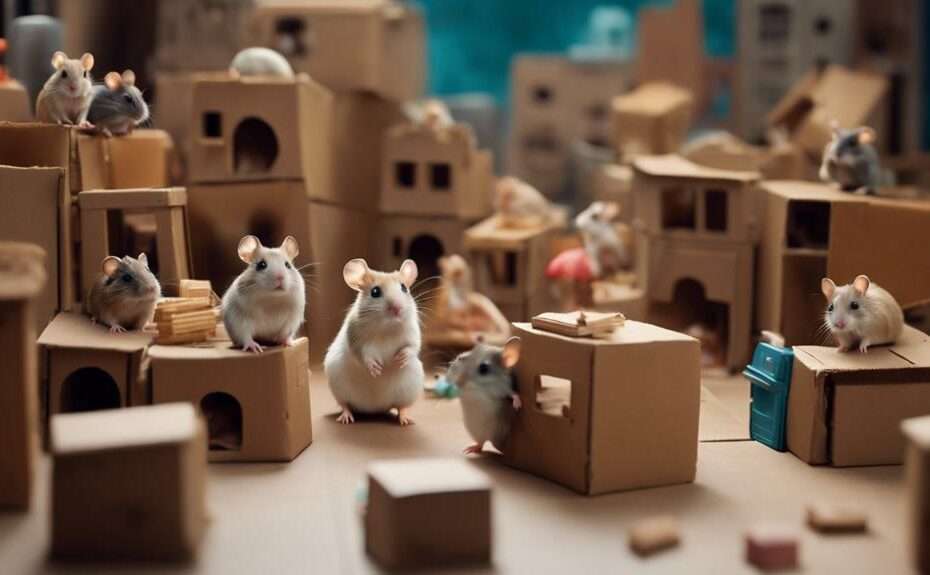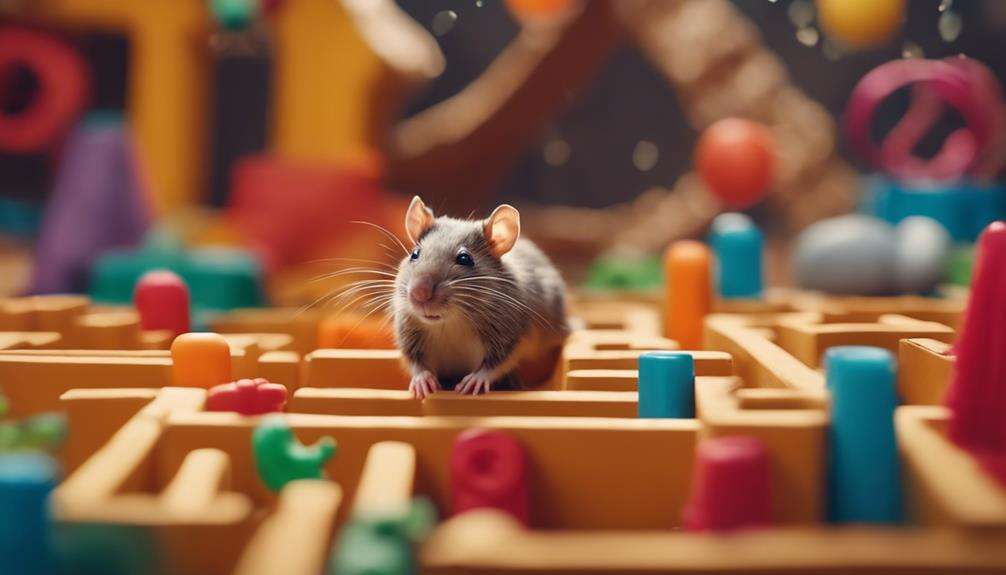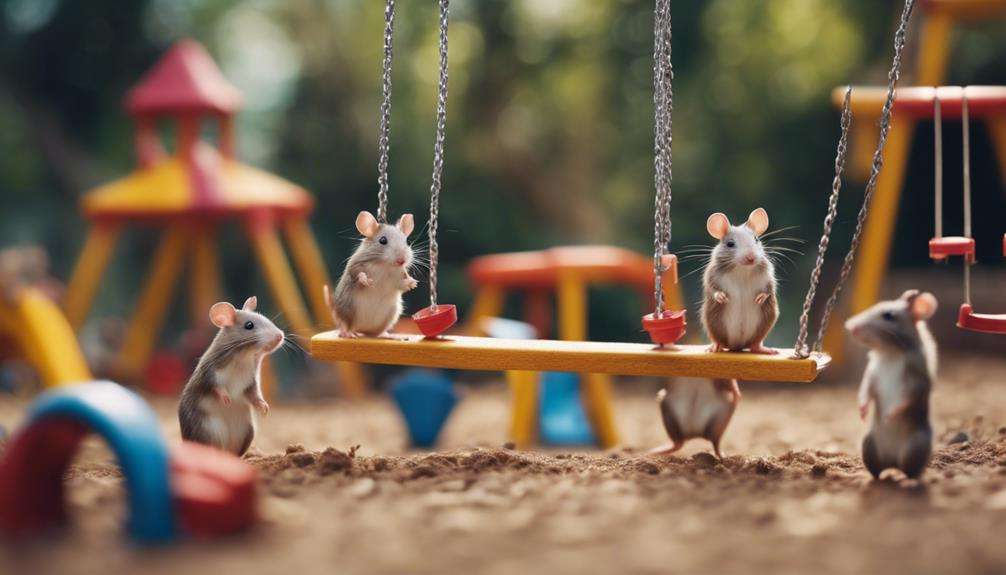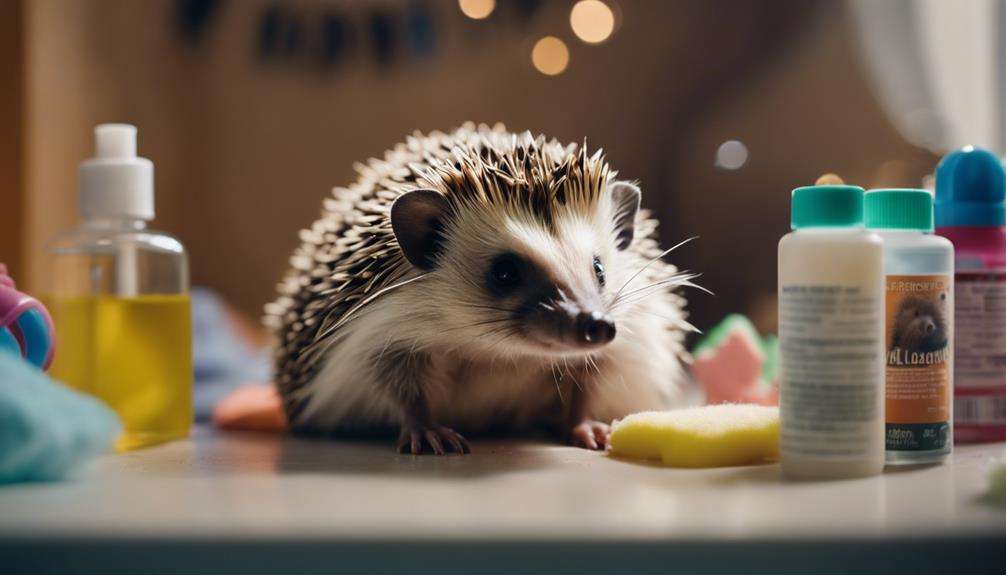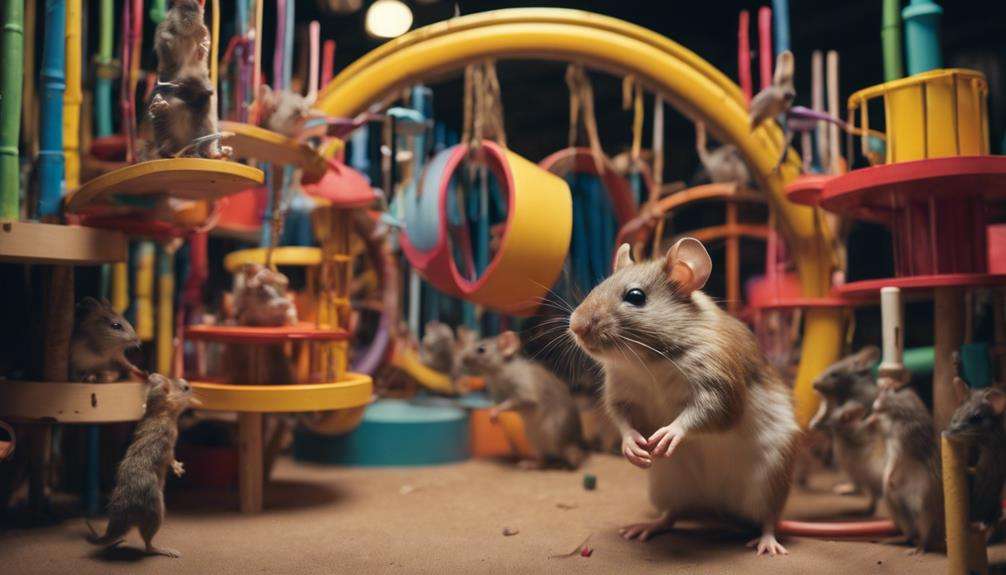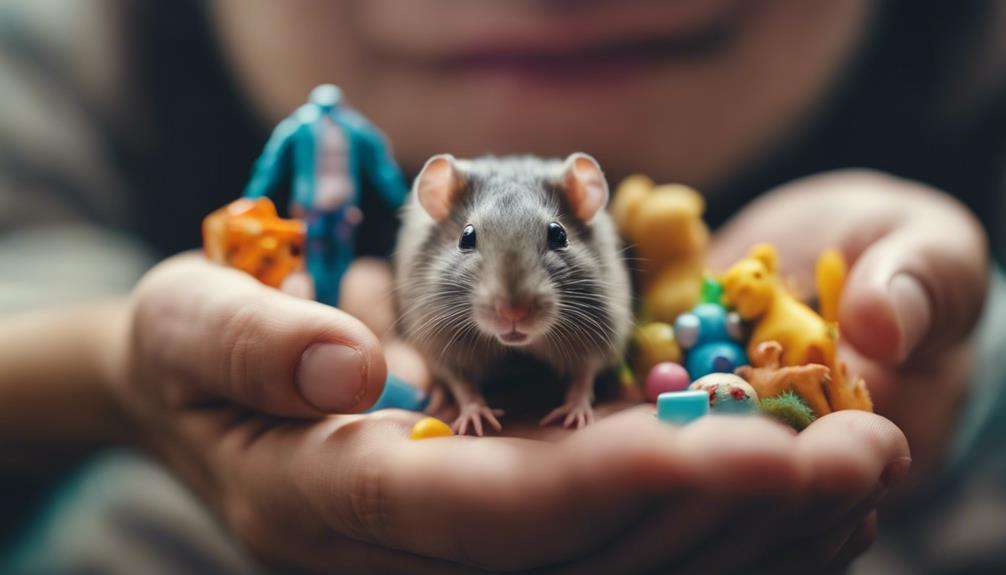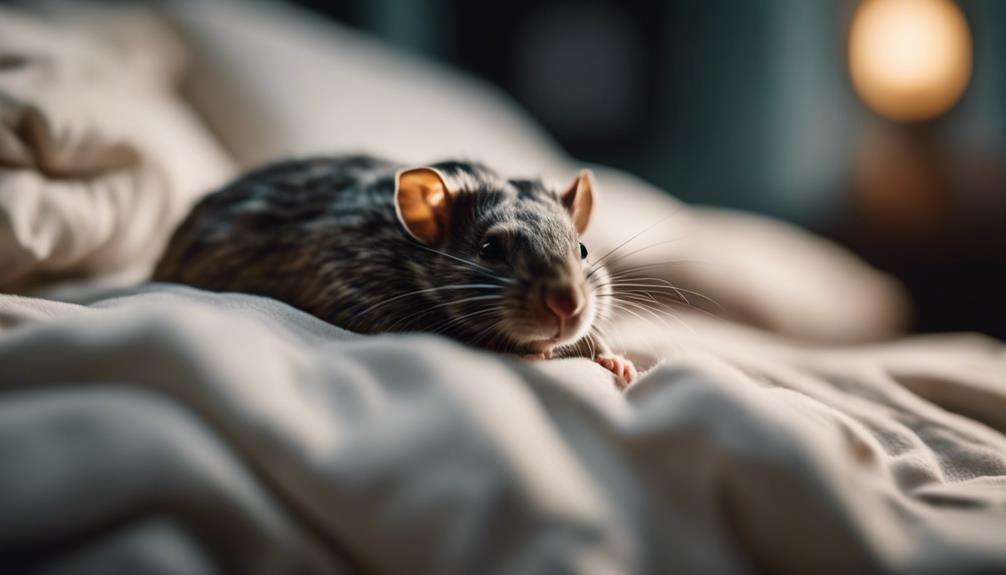If you're on the hunt for quirky rodents that fit snugly into your compact living quarters, imagine a gallery of miniature marvels awaiting your discovery. These tiny creatures offer a surprising array of personalities and characteristics that can brighten up your space in unexpected ways.
Perhaps you've heard of the elusive Pygmy Jerboa or the charming African Pygmy Mouse, but what about the secretive Pygmy Possum or the endearing Pygmy Dormouse? Each of these diminutive beings brings a touch of whimsy and wonder to the world of small-space companionship, promising a delightful journey into the realm of unconventional rodent companions.
Key Takeaways
- Small rodents like Pygmy Jerboas and African Pygmy Mice are ideal for limited spaces.
- Climbing and jumping abilities are distinctive in Pygmy Rice Rats and Baluchistan Pygmy Jerboas.
- Survival skills and specialized habitats characterize Pygmy Rabbits and Baluchistan Pygmy Jerboas.
- Pygmy Flying Squirrels stand out with unique physical features and specific care requirements for small enclosures.
Pygmy Jerboa
The Pygmy Jerboa, the smallest rodent in the world at only about 2 inches in length, is a fascinating creature with unique adaptations for desert living. These tiny rodents have perfected the art of surviving in arid environments by being nocturnal, allowing them to avoid the scorching desert sun while being active during the cooler night hours. Their large ears help them pick up on sounds in the quiet of the night, while their long hind legs enable them to hop like kangaroos across the sandy dunes, conserving energy in their quest for food.
Adapted to dry desert conditions, Pygmy Jerboas can go for extended periods without water, relying on the moisture in their food for sustenance. Their soft fur not only provides insulation during chilly desert nights but also acts as a perfect camouflage against predators, blending seamlessly into their sandy surroundings. These quirky little rodents have truly mastered the art of survival in the harsh desert landscape.
African Pygmy Mouse
Adapting to various environments with remarkable prowess, the African Pygmy Mouse, measuring a mere 2-4 inches in length, captivates with its agility and sociable nature.
These small rodents, also known as African Pygmy Mice, have a lifespan of around 2-3 years in captivity. They're social animals, thriving in pairs or small groups for companionship.
Despite their tiny size, African Pygmy Mice are active and curious creatures that enjoy exploring their surroundings with quick movements and nimble actions. Their agility allows them to navigate through various obstacles with ease, making them fascinating to observe.
In addition to their physical abilities, these mice exhibit a playful demeanor, often engaging in interactive behaviors with their companions.
If you're looking for a charming and lively addition to your small space, the African Pygmy Mouse could be the perfect choice to bring joy and entertainment into your home.
Striped Grass Mouse
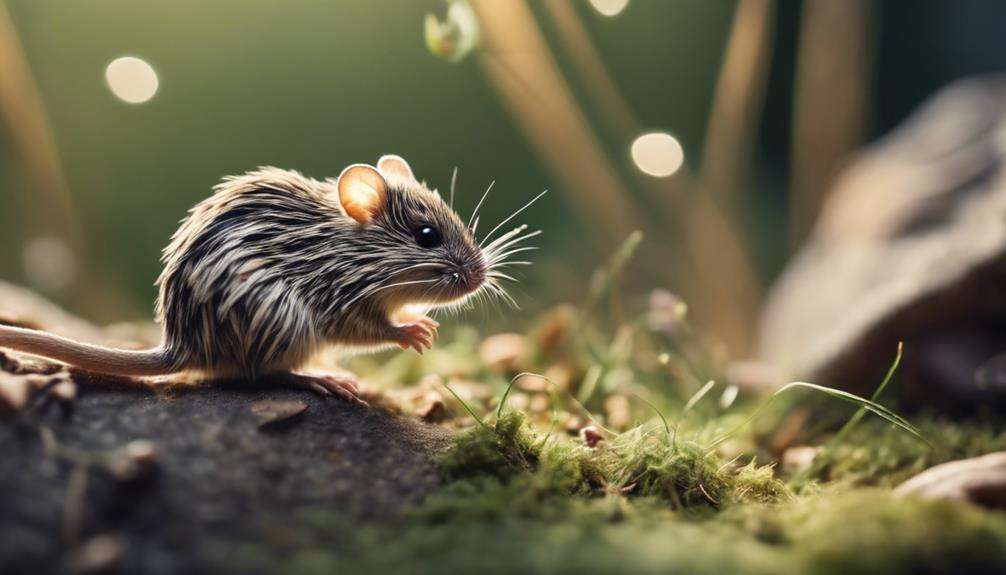
Captivating with their distinctive striped appearance, the Striped Grass Mouse, also known as Lemniscomys barbarus, is a small rodent species native to Africa. These social creatures are often found living in groups, displaying playful and interactive behaviors that make them fascinating to observe. Known for their agility, Striped Grass Mice move swiftly and with grace, making them a joy to watch as they navigate their surroundings.
Feeding mainly on seeds, grains, and fruits, these mice have a diet that complements their active nature. Their small size and low maintenance requirements make them excellent choices for those looking to keep pets in limited spaces. Whether it's their charming striped pattern or their entertaining antics, Striped Grass Mice are sure to bring delight to any small living environment. Consider adding these delightful rodents to your home for a lively and engaging pet experience.
Pygmy Possum
With their unique arboreal lifestyle, pygmy possums, belonging to the family Burramyidae, display fascinating nocturnal behaviors in their natural habitats of Australia and New Guinea. These small marsupials have adapted to their environment in remarkable ways, making them intriguing creatures to observe.
Here are some key facts about pygmy possums:
- Nocturnal Creatures: Pygmy possums are primarily active during the night, utilizing their keen senses to navigate in dim light.
- Arboreal Lifestyle: These tiny possums are often found dwelling in trees and shrubs, where they move with agility and grace.
- Unique Diet: Pygmy possums have a specialized diet that includes nectar, pollen, insects, and fruit, showcasing their diverse nutritional needs.
- Adaptations: Native to Australia and New Guinea, pygmy possums have developed various adaptations to survive in their habitats, such as camouflage mechanisms and efficient foraging strategies.
Observing pygmy possums in their natural habitats reveals the beauty of their nocturnal world and the intricacies of their lifestyle.
Pygmy Dormouse
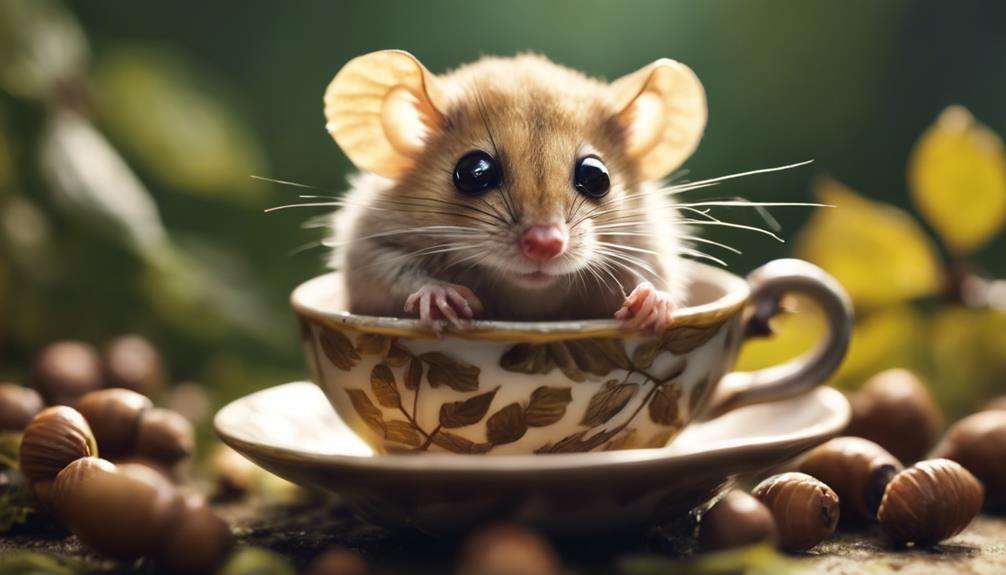
Inhabiting various regions across Europe and Asia, the pygmy dormouse is a small rodent species known for its diminutive size and solitary nature. Weighing only about 0.4 to 0.7 ounces, these quirky rodents have a tail length of approximately 2.4 to 3.5 inches. Pygmy dormice are nocturnal creatures, most active during the night, which makes them fascinating to observe in low-light conditions.
These tiny rodents prefer living alone, showcasing a solitary behavior that sets them apart from other rodent species. With a lifespan of around 3 to 4 years in captivity, they can be delightful companions for a few years. Their unique characteristics and behaviors make them an intriguing choice for those interested in observing the nocturnal activities of a small, active rodent species.
If you're seeking a small, quirky rodent that thrives in a solitary setting and is most active at night, the pygmy dormouse could be the perfect fit for your small space.
Pygmy Mole
When it comes to the Pygmy Mole, you'll be captivated by its role as a tiny underground explorer.
These moles have unique sensory adaptations that help them navigate their subterranean world with precision.
Their specialized shovel-like front paws make them adept at digging through the soil to find their favorite meals.
Tiny Underground Explorer
Pygmy moles, measuring around 3-4 inches in length, are adept underground explorers with specialized claws for tunneling in search of insects and larvae. These small rodents exhibit unique burrowing behavior, spending most of their time underground in intricate burrows.
They're highly elusive creatures, rarely spotted above ground due to their subterranean lifestyle. Pygmy moles prefer habitats with loose, sandy soil, enabling them to navigate and excavate tunnels efficiently. Their specialized claws play a crucial role in their survival, allowing them to dig through the earth with precision and speed.
This adaptation helps them locate and feed on insects and larvae, sustaining their energy within the hidden depths of the ground.
Unique Sensory Adaptations
With their intricate burrowing behavior and reliance on specialized sensory adaptations, pygmy moles possess remarkable abilities to thrive in their dark, subterranean world. These unique rodents showcase an acute sense of touch, crucial for navigating their underground habitats with precision.
Their distinctive star-shaped nose serves as a sophisticated tool, enabling them to detect subtle vibrations and movements in the soil, aiding in both locating prey and evading predators effectively. Pygmy moles heavily depend on their keen sense of smell, utilizing their long, sensitive snouts to sniff out insects and earthworms hidden beneath the ground.
Despite their reduced eyesight due to the subterranean lifestyle, the pygmy mole's specialized sensory adaptations underscore their exceptional ability to excel in dim, underground environments.
Pygmy Rice Rat
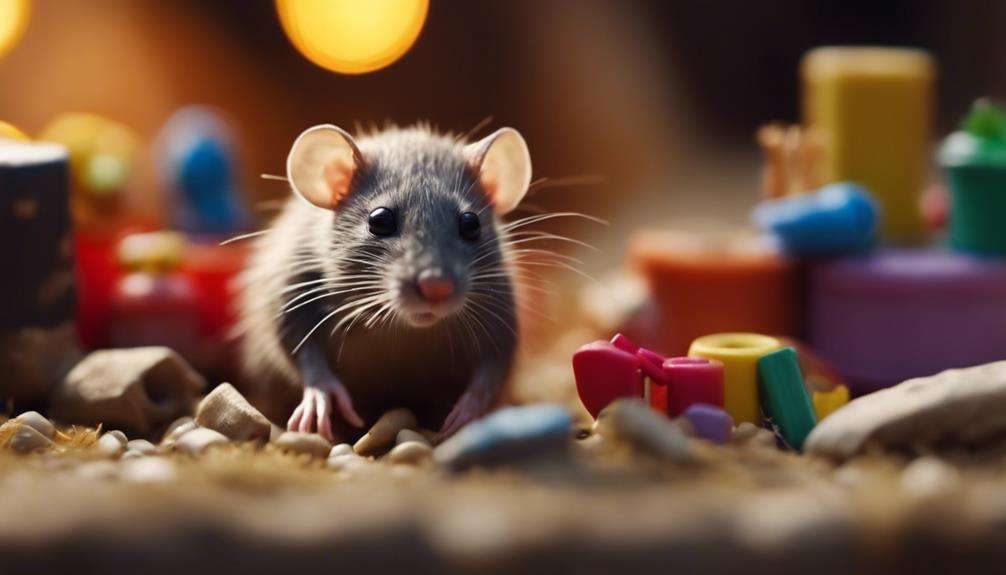
Being one of the tiniest rodents in existence, the Pygmy Rice Rat showcases exceptional agility and climbing abilities. These small rodents, ranging from 3 to 4 inches in length, are native to South America.
Here are some key facts about the Pygmy Rice Rat:
- Agile Climbers: Pygmy Rice Rats are skilled climbers and jumpers, utilizing their agility to navigate their environment effectively.
- Nocturnal Behavior: These rodents are primarily active during the night, using their keen senses to hunt for food and avoid predators.
- Varied Diet: Pygmy Rice Rats have a diverse diet that includes insects, fruits, seeds, and vegetation, allowing them to adapt to different food sources.
- Ecological Role: Despite their small size, Pygmy Rice Rats play a crucial role in their ecosystem as seed dispersers and controllers of pests, contributing to the balance of their habitat.
Baluchistan Pygmy Jerboa
In the sandy deserts and semi-desert regions of Pakistan and Afghanistan, the Baluchistan Pygmy Jerboa, one of the smallest rodents globally at about 2 inches long, thrives with its unique adaptations. These small rodents with their long hind legs and large ears are well-suited for desert habitats, where they hop like kangaroos to move swiftly across the sandy terrain.
Baluchistan Pygmy Jerboas are primarily nocturnal, seeking shelter in burrows during the scorching daylight hours to avoid the extreme desert temperatures. Their diet consists of seeds, insects, and plant matter, showcasing their adaptability to the arid environments they call home. Native to Pakistan and Afghanistan, these tiny creatures exhibit remarkable survival skills in harsh conditions, making them fascinating subjects for those interested in the diverse wildlife of the region.
The Baluchistan Pygmy Jerboa's efficient use of resources and specialized features highlight their ability to thrive in challenging environments.
Pygmy Rabbit
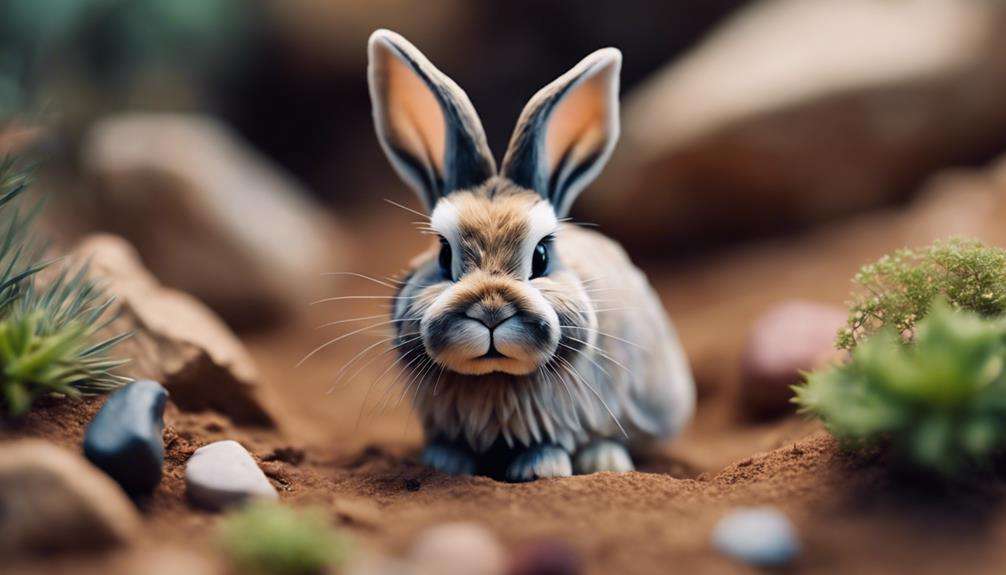
The Pygmy Rabbit, North America's smallest rabbit species, boasts a distinctive silver-gray fur coloration and is renowned for its expert burrowing abilities. They weigh only up to 1 pound and have short ears, making them incredibly adorable and unique.
These tiny creatures are expert burrowers, creating intricate underground tunnel systems that provide them with shelter and protection from predators. Due to their small size and elusive nature, Pygmy Rabbits are classified as a rare and endangered species in North America.
Their specialized diet consists mainly of sagebrush, grasses, and other vegetation found in their natural habitat, showcasing their adaptation to specific food sources. It's crucial to protect the Pygmy Rabbit's habitat to ensure their survival and prevent further decline in their population.
Observing these small, silver-gray fur rabbits in the wild can be a rare and rewarding experience, highlighting the importance of conservation efforts to preserve this charming species.
Pygmy Flying Squirrel
So, ready to learn about the quirky Pygmy Flying Squirrel?
These tiny creatures have a fascinating gliding ability thanks to their patagium membrane.
In the upcoming sections, we'll explore their unique physical features and provide essential care and habitat tips.
Unique Physical Features
With its small body size, large eyes, and a flat tail aiding in gliding, the Pygmy Flying Squirrel showcases a unique array of physical features. These expert gliders use a membrane of skin between their limbs to gracefully move from tree to tree, showcasing their remarkable agility.
Being nocturnal creatures, Pygmy Flying Squirrels are most active during the night, making them elusive to human observation. Their specialized diet includes fruits, nuts, seeds, and insects that are abundant in their forest habitat, highlighting their adaptability.
Due to their small size and secretive nature, encountering these rare squirrels in the wild is a special and privileged experience.
Care and Habitat Tips
For optimal care and habitat setup for Pygmy Flying Squirrels, ensure your enclosure provides a warm environment with ample climbing structures and hiding spots. These tiny nocturnal animals have a lifespan of 5-7 years in captivity with proper care.
Make sure to offer a varied diet including fruits, vegetables, nuts, and insects for their nutritional needs. Since they're small pets, it's essential to create a safe environment with no sharp edges or small openings where they could get stuck. Consider providing nesting materials like shredded paper or soft bedding for their comfort.
Frequently Asked Questions
What Rodent Needs the Least Space?
For those seeking a minimalist pet option, gerbils are your ideal choice. These petite rodent pals require the least space, thriving in compact habitats. With low space requirements, they make excellent condo-friendly rodents, perfect for small living spaces.
What Is the Most Playful Rodent?
If you're looking for a rodent bursting with playfulness, playful degus take the crown. These social critters love interactive toys and engaging in fun antics like chasing each other around and exploring with curiosity.
What Is the Best Small Rodent to Keep as a Pet?
When choosing a small rodent as a pet, consider factors like rodent species, ideal habitats, pet care, bonding techniques, handling tips, training tricks, health concerns, and enrichment activities. Research and understand their unique needs.
What Is the Least Messy Rodent?
When considering rodents, gerbils stand out as the least messy option. Their hygienic habits, tidy tendencies, and efficient digestion make them clean companions. With minimal mess and easy cleanup, gerbils are ideal for small spaces.
Conclusion
In conclusion, the top 10 quirky rodents perfect for small spaces offer a plethora of personality and charm.
From the petite Pygmy Jerboa to the delightful Pygmy Possum, these tiny creatures bring joy and entertainment to any home.
With their unique qualities and care requirements, these rodents add a touch of whimsy and wonder to your living space.
So why wait? Bring home one of these adorable critters today and experience the joy of having a pint-sized pet pal!
